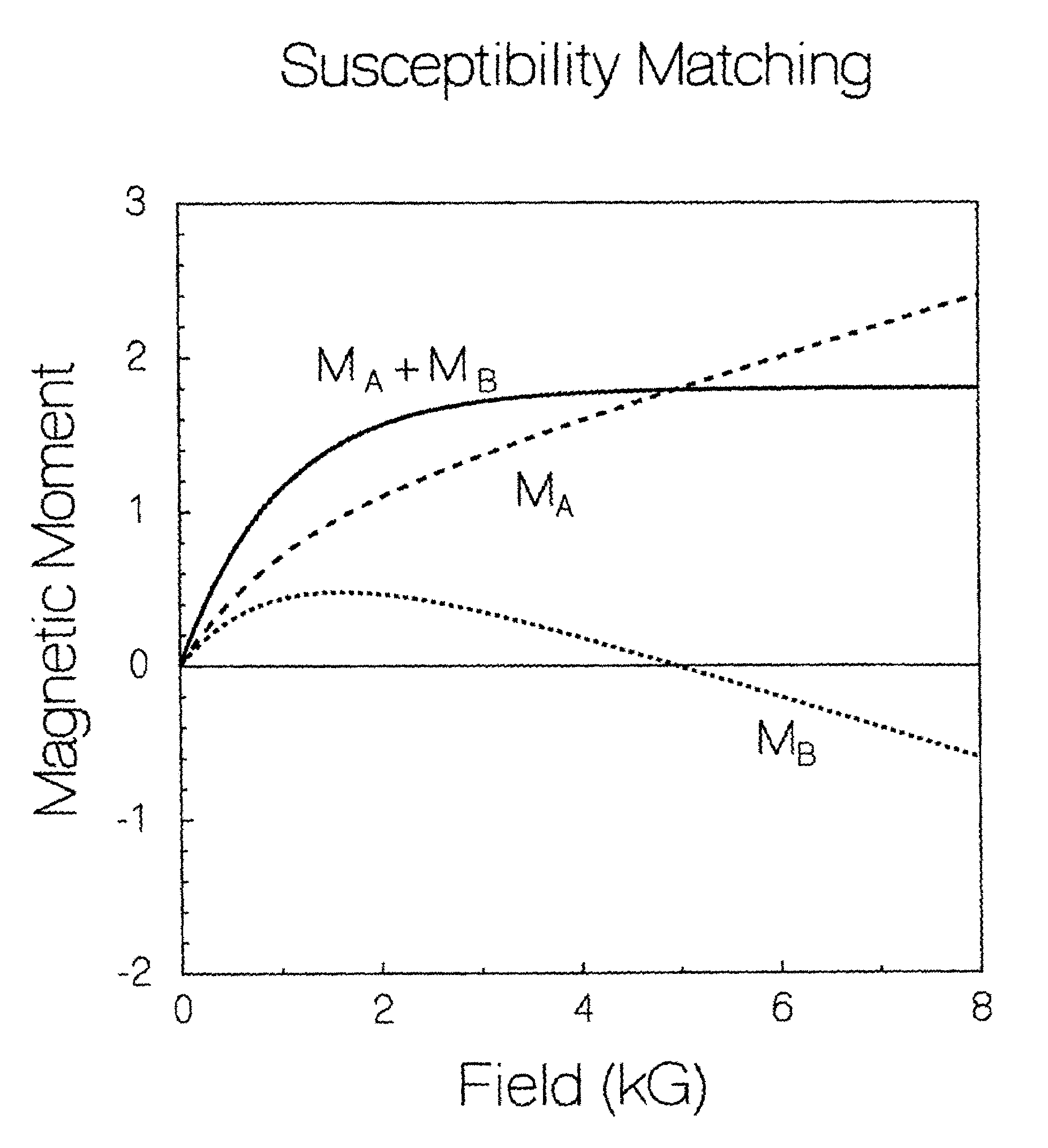Low temperature susceptibility compensation
a susceptibility compensation and low temperature technology, applied in the direction of magnetic paints, magnetic bodies, magnetism/organic metal materials, etc., can solve the problems of difficult cryogenic temperature practice, achieve low or nearly zero magnetic susceptibility, and achieve low or nearly zero magnetic susceptibility, and advantageous magnetic susceptibility properties
- Summary
- Abstract
- Description
- Claims
- Application Information
AI Technical Summary
Benefits of technology
Problems solved by technology
Method used
Image
Examples
Embodiment Construction
[0030]In an NMR apparatus, for example, use is made of a magnet, and most often, a superconducting magnet having a bore. The magnet bore may support properties producing certain disadvantageous effects, such as magnetic residual fields, electrical noise, inhomogeneity, etc, due to magnetic susceptibility discontinuity of materials comprising, or supported within the bore. By using selected materials having selected values of magnetic susceptibility, the magnetic susceptibility discontinuity effect can be reduced.
[0031]In fabricating the NMR apparatus, epoxy resin is often used as a bonding or cementing agent to join together components of the magnet and / or of the NMR probe supported within the bore. Even though used in small quantities, epoxy resin has a non-zero value of magnetic susceptibility.
[0032]The invention encompasses an epoxy composition which has nearly zero magnetic susceptibility and / or induced magnetic moment, especially at cryogenic temperatures and high applied field...
PUM
| Property | Measurement | Unit |
|---|---|---|
| temperature | aaaaa | aaaaa |
| magnetic resonance apparatus | aaaaa | aaaaa |
| magnetic susceptibility | aaaaa | aaaaa |
Abstract
Description
Claims
Application Information
 Login to View More
Login to View More - R&D
- Intellectual Property
- Life Sciences
- Materials
- Tech Scout
- Unparalleled Data Quality
- Higher Quality Content
- 60% Fewer Hallucinations
Browse by: Latest US Patents, China's latest patents, Technical Efficacy Thesaurus, Application Domain, Technology Topic, Popular Technical Reports.
© 2025 PatSnap. All rights reserved.Legal|Privacy policy|Modern Slavery Act Transparency Statement|Sitemap|About US| Contact US: help@patsnap.com



